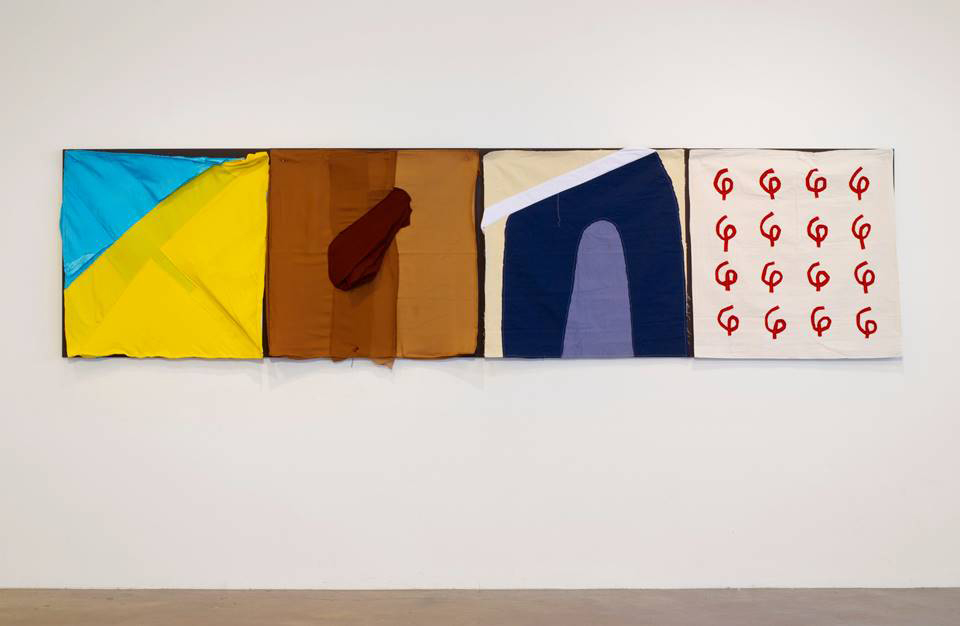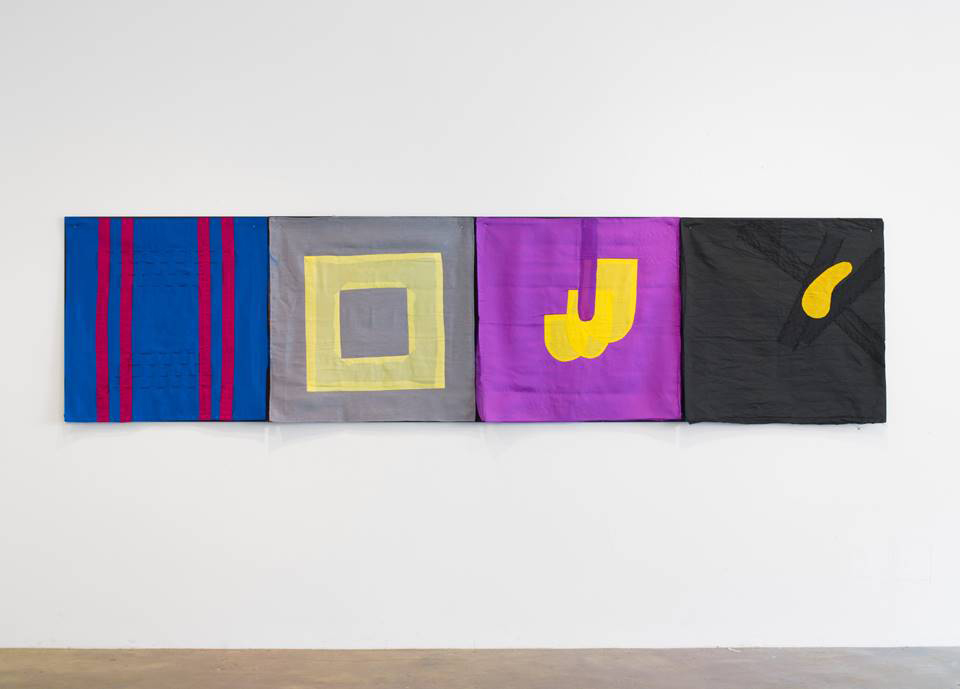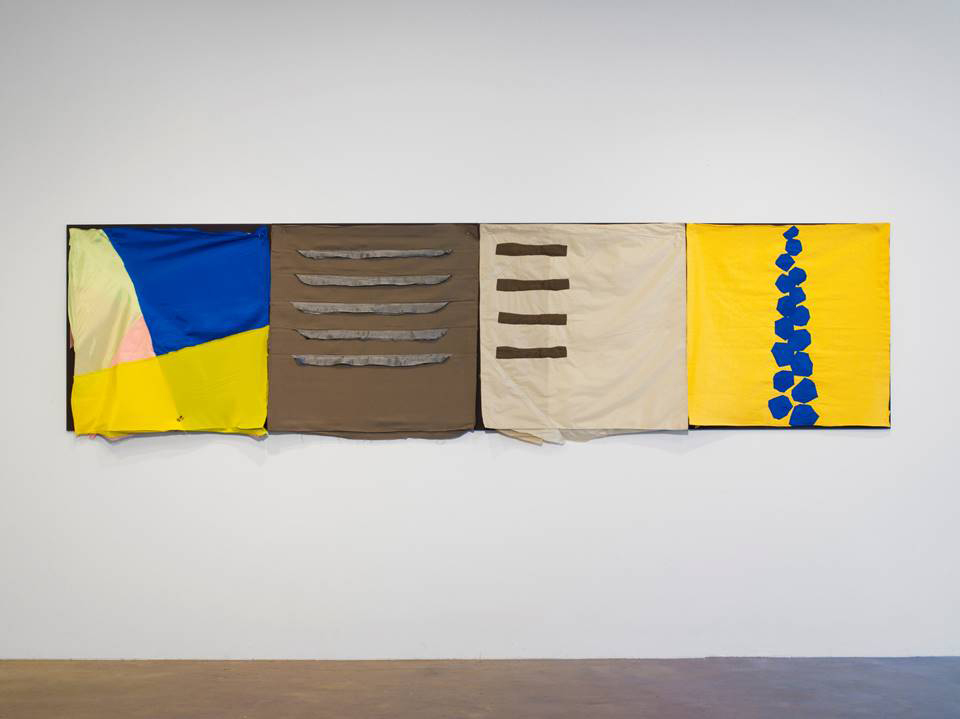
Richard Tuttle's Critical Edge
Richard Tuttle first came to prominence in the 60s with a body of work that used mundane materials such as textile, paper, wire, and rope – materials he still works with today as a curent show of recent work at Pace London reveals
Younger Phaidon.com readers might know Richard Tuttle from his piece I Don’t Know, the weave of textile language which dominated the Tate's Turbine Hall in 2014. But Tuttle first came to prominence in the 1960s, gaining critical recognition for a body of work that used mundane materials such as textile, paper, wire, and rope – materials he still works with today as a show of recent work at Pace London reveals.
The Critical Edge features seven recent works assembled from layers of vibrant fabric purchased in New York and Maine. Sewn by hand and with a machine, the combined cloths incorporate wood and nails and continue Tuttle’s exploration of materiality, space, and three-dimensionality. “I’ve been very interested in how space, defined as two-dimensional (a plane, like a painting), can move into form, three dimensions,” Tuttle says.

Tuttle's works are highly sensual objects that activate our senses of sight and touch.By alluding to philosophical inquiry, the objects' shared title, The Critical Edge, suggests that the works reach beyond art to become meditations on the nature of perception and understanding.
In an interview with Artspace - where you can also buy some very nice examples of his work - Tuttle ruminated on the changes in the art world over the years he's been one of its leading lights.

"I make my work for everybody. It’s not for some elite, inside crowd. Whether it takes them 40 years or 70 years to get it, it’s still for everyone. And I think someday, no matter what, it will be accessible to everyone. Call that a belief structure, call it whatever you like, but that’s how I go ahead.
"My generation and I dreamed of this project where art is something that’s as available to people as life itself, not something that gets stuffed in some basement. It’s a huge ambition, and maybe it’s not even possible. There has been a lot of nuttiness coming out from that, but the fact is, we had to be our own art historians, our own critics, our own apologists, our own social scientists along with making our work." Admirable sentiments expressed by an admirable artist. More on the show and Tuttle at Pace's site.